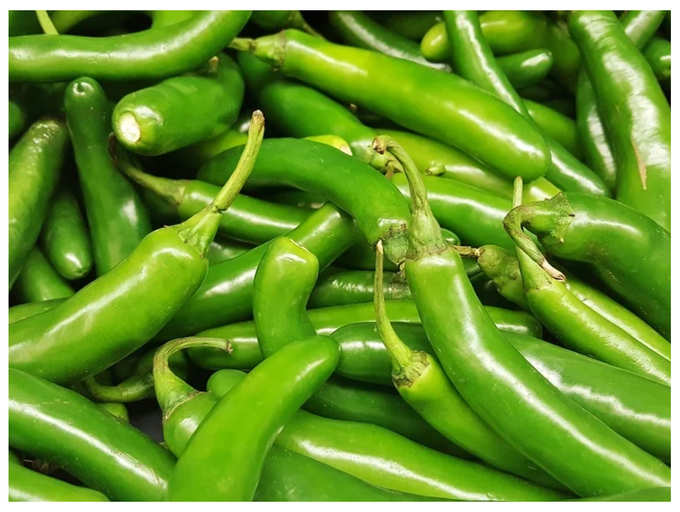https://timesofindia.indiatimes.com/life-style/food-news/8-varieties-of-indian-chillies-no-spice-lover-should-miss/photostory/77872954.cms?picid=77873004
01/9Lesser-known chillies of India

Chilli, better known as mirch in India is a South American fruit which was introduced to the subcontinent by the Portuguese 400 years ago. They are widely used in many cuisines as a spice to add heat to dishes. Chillies originated in Mexico and later spread across the world, and are used for both food and traditional medicine. Today, they are used around the world to add a punch of heat and flavour to dishes.
Indian dishes are incomplete without chillies. They are an important and integral part of every dish that we eat throughout the day. Apart from adding flavour to food, chillies benefit the digestive tracts, promote healthy heart, relieve joint pains, promote weight loss, mitigate migraine, reduce cancer risk, prevents allergies etc.
Here is a look at 8 varieties of Indian chillies you should try:
READMORE02/9Kashmiri Chilli, Kashmir

As the name suggests, they are grown in Kashmir and parts of Himachal Pradesh. It is known for its deep red colour. One characteristic of Kashmiri chilli is that it is not too hot to taste. Because of this, it is used extensively to add colour to dishes without making them too spicy. It is a very common household ingredient and is available in powdered form across the market.
03/9Bhut Jolikia, North East India

A Guinness Book record holder, Bhut Jolikia is certified as the hottest chilli in the world. It is also known as ‘ghost pepper’ and is cultivated in Arunachal Pradesh, Assam, Nagaland and Manipur. It is most popularly used in combination with dried or fermented fish and pork.
04/9Jwala Chilli, Gujarat

Jwala Chilli is mostly grown in southern parts of Gujarat like Mehsana and Kheda. It is very pungent in taste and is served as an accompaniment with samosa, vada pav, etc. Jwala is very popular in Indian households and is even used in pickles. Although it is green initially, it turns red after maturing.
05/9Byadgi Chilli, Karnataka

Byadgi chillies are one of the most popular chillies in India and are named after the town of Bydagi, which is located in the Haveri district of Karnataka. They also an essential part of Udipi Cuisine. The chilli offers a great shade of red colour to the curries, and is not very spicy.
06/9Guntur Chilli, Andhra Pradesh

Andhra cuisine is famous for its extremely spicy dishes and Guntur chilli is the reason behind this. It has many varieties that are grown not only in Andhra but also in Madhya Pradesh. Known for its heat, Guntur has become so popular that it is exported all over the world.
07/9Mundu Chilli, South India

They are mainly grown in Tamil Nadu and Andhra Pradesh and are small and round with a thin skin. Mundu has a very unique flavour. They are barely spicy but have a unique flavour which enhances the taste of many dishes.
08/9Khola Chilli, Goa

The Khola chilli is grown in the hill slopes of Canacona in Goa. It is known for its taste and colour. This bright red chilli is a key ingredient of home-made condiments, including the famous ‘recheado’ paste used as a food stuffing, as well as used in mango pickles and to make red chilli sauce.
09/9Kanthari Chilli, Kerala

This small whitish (when mature) chilly has a high pungency and is also known as Bird’s Eye chilli. It adds heat and lends good flavour to dishes.
- Get link
- X
- Other Apps
Comments